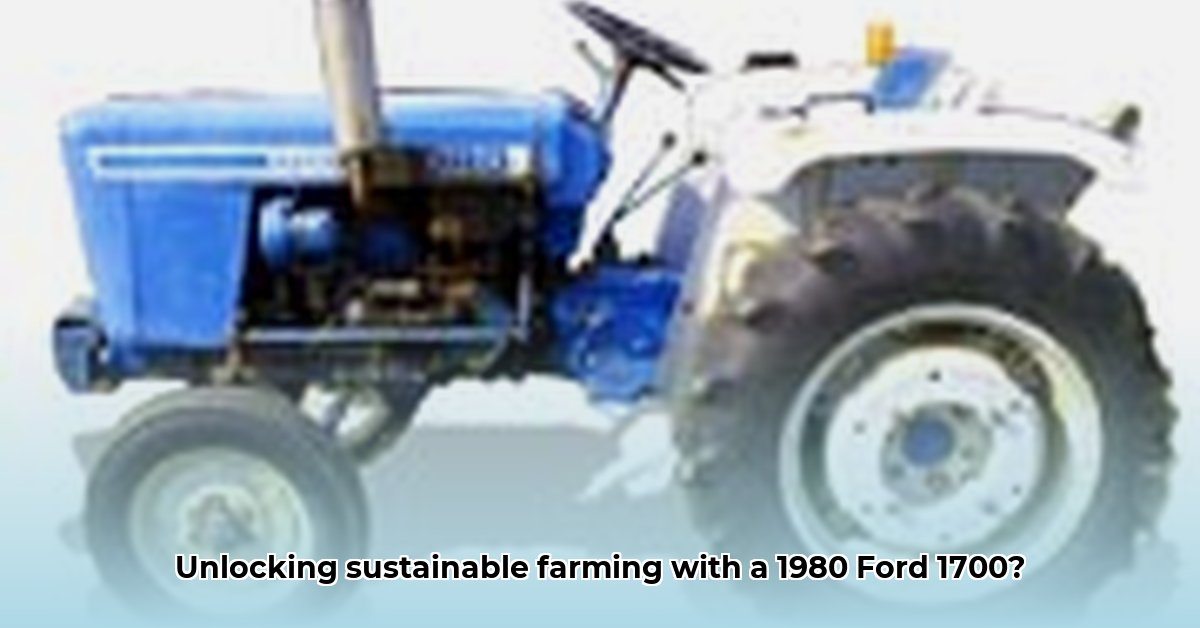
The 1980 Ford 1700 4x4 tractor, a product of its era, offers a compelling blend of robust mechanics and surprising relevance to modern sustainable farming practices. While lacking the advanced features of contemporary tractors, its durability, repairability, and likely fuel efficiency make it a worthy contender for environmentally conscious farmers. This detailed guide explores its specifications, performance, historical context, and its contribution to a more sustainable agricultural future. For more Ford tractor images, see this gallery.
Under the Hood: Engine and Drivetrain Specifications
The Ford 1700's powertrain is its defining characteristic. Powered by a Shibaura-built engine, it delivers approximately 25 horsepower (though variations may exist depending on testing methodology and engine condition). This is coupled with a robust 12-speed manual transmission, providing precise control over power delivery. The four-wheel-drive system ensures exceptional traction—a significant advantage in challenging field conditions. Isn't the capability to navigate difficult terrain a key element of efficient farming operations?
Dimensions, Weight, and Versatility
Its compact design, crucial for maneuverability in tighter spaces, makes the Ford 1700 ideally suited for smaller farms or operations requiring precise control. However, this doesn't detract from its versatility. A wide range of attachments—mowers, loaders, snow blowers, and even backhoes—significantly expands its capabilities. This reduces the need for specialized equipment, directly contributing to sustainable practices through reduced manufacturing, transportation, and waste.
Performance & Sustainable Farming Implications
How does the Ford 1700's performance impact sustainability? While lacking the brute force of modern tractors, its smaller engine likely translates to superior fuel efficiency. This direct cost saving contributes significantly to the economic viability of sustainable farming. Moreover, its straightforward mechanical design simplifies maintenance and repairs. This inherent repairability, a stark contrast to modern electronically-dependent tractors, extends its lifespan and reduces waste.
Historical Context and Agricultural Evolution
The Ford 1700, produced between 1979 and 1983, reflects the agricultural technology of its time. Its relatively affordable price likely broadened access to mechanization for a wider range of farmers. This period prioritized robust construction and ease of maintenance over advanced technology. The tractor's design provides a fascinating insight into the evolution of agricultural machinery.
Sustainability: Longevity and Resource Management
The Ford 1700's relevance to sustainable agriculture extends beyond its historical context. Its robust construction and straightforward design contribute to significantly longer lifespans compared to modern machines. This extended operational life directly reduces the environmental impact associated with manufacturing, transportation, and disposal of newer equipment. The ease of repair further minimizes waste by extending its useful life. Could this robust design serve as a model for future agricultural equipment?
Detailed Specifications
| Specification | Value | Notes |
|---|---|---|
| Engine | Shibaura-built | ~25 hp (variations possible due to testing methodology and engine condition) |
| Transmission | 12-speed manual | Provides precise control over power delivery |
| Drive Type | 4-wheel drive | Enhanced traction in challenging conditions |
| Attachments | Highly Versatile | Compatible with a wide range of implements |
| Fuel Efficiency | High (relative) | Compared to larger, modern tractors. |
| Maintenance | Relatively Simple | Fewer electronic components; simpler diagnosis and repair |
| Production Years | 1979-1983 |
Conclusion: A Sustainable Legacy
The 1980 Ford 1700 4x4 tractor's specifications are more than just technical details; they represent a pathway towards sustainable agricultural practices. While lacking modern technological advancements, its robust design, repairability, and likely fuel efficiency make it a compelling choice for environmentally conscious farmers prioritizing long-term cost savings and a reduced environmental footprint. Its legacy extends beyond its production years, offering valuable lessons for the future of sustainable agriculture.